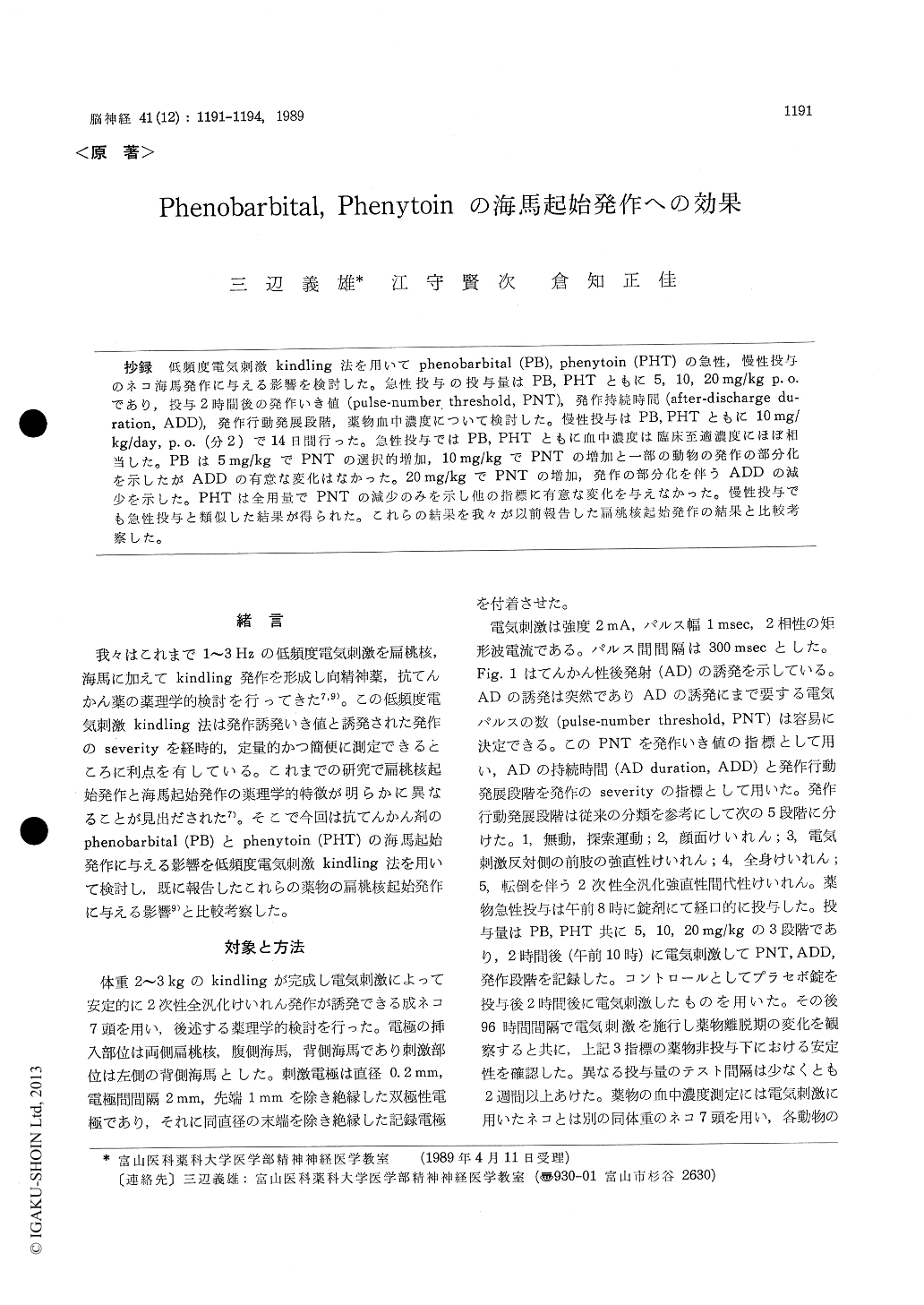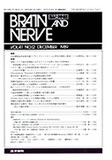Japanese
English
- 有料閲覧
- Abstract 文献概要
- 1ページ目 Look Inside
抄録 低頻度電気刺激kindling法を用いてphenobarbital (PB),phenytoin (PHT)の急性,慢性投与のネコ海馬発作に与える影響を検討した。急性投与の投与量はPB, PHTともに5,10,20 mg/kg P. o. であり,投与2時間後の発作いき値(Pulse-number threshold, PNT),発作持続時間(after-discharge du-ration, ADD),発作行動発展段階,薬物血中濃度について検討した。慢性投与はPB, PHTともに10 mg/kg/day, p. o. (分2)で14日間行った。急性投与ではPB, PHTともに血中濃度は臨床至適濃度にほぼ相当した。PBは5mg/kgでPNTの選択的増加,10 mg/kgでPNTの増加と一部の動物の発作の部分化を示したがADDの有意な変化はなかった。20 mg/kgでPNTの増加,発作の部分化を伴うADDの減少を示した。PHTは全用量でPNTの減少のみを示し他の指標に有意な変化を与えなかった。慢性投与でも急性投与と類似した結果が得られた。これらの結果を我々が以前報告した扁桃核起始発作の結果と比較考察した。
We have recently reported some pharmacologi-cal studies using a kindling model of epilepsy in-duced with 1-3 HZ electrical stimulations, referred to as the low-frequency kindling. Since a previous study showed that the effects of psychotropic drugs on limbic seizures were dependent on the location of epileptic focus, we decided to study acute and chronic effects of anticonvulsants on the hippocam-pus generating seizures to compare with the results of a previous study of the amygdala generating seizures, which was done under the same condi-tions with this study. The number of stimulating pulses required for the triggering of epileptic af-terdischarge (pulse-number threshold) was used as the indicator for the seizure threshold. Duration of afterdischarge (ADD), ictal and interictal beha-viors of the subjected 7 cats, and serum drug levels were also recorded.
A dose-dependent increase of serum drug levels was confirmed in each drug, and the values were well comparable with the optimal range in clinical use. In acute experiment PB 5 mg/kg p. o. produ-ced no significant effect on PNT and ADD. PB 10 mg/kg increased PNT significantly (p<0. 02) at 2 hrs after administration without affecting ADD, but 4 cats presented the seizure-stage regressions. PB 20 mg/kg increased PNT (p<0. 02) and decre-ased ADD (p<0. 02) with the seizure-stage regres-sions of all the tested cats at 2 hrs after administra-tion, and increased PNT (p<0. 05) without affect-ing ADD and seizure stage at 96 hrs after admini-stration. PHT 5, 10, 20 mg/kg decreased PNT (p <O. 05, 0. 02, 0. 02, respectively) without affecting ADD at 2 hrs after administration. In chronic experiment (10 mg/kg/day p. o., 14 days), PB and PHT showed the same pharmacological features with those of acute experiment.
We compare the results of this study with those of a previous study of amygdala generating seizu-res. 1, PB produced a PNT-increase more promi-nently than decreases of ADD and seizure stage at 5 and 10 mg/kg in amygdala seizure, suggesting that PB produced the same anticonvulsive action on the two limbic seizures. 2, Whereas PHT de-creased ADD and seizure stage without affecting PNT at 15 and 30 mg/kg/ in amygdala seizure, PHT produced only a proconvulsive action by de-creasing PNT in hippocampus seizure. Previous stu-dies showed that the inhibitory effect of anticon-vulsants on seizure threshold and ADD varied be-tween individual brain structures. However we do not know other studies which well described that anticonvulsants exerted different actions between hippocampus-and amgdala-generating seizures.

Copyright © 1989, Igaku-Shoin Ltd. All rights reserved.


